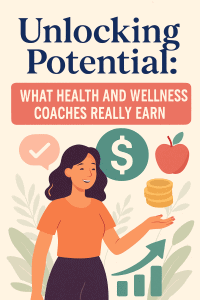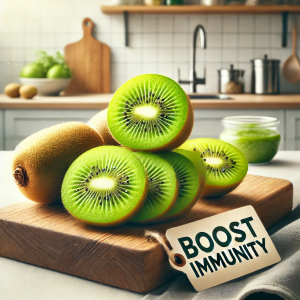7 Advantages of Fasting and the Delightful Forms of Fasting

Believe that you can kick-start your metabolism, feel more energetic, and enjoy various health benefits without counting calories or sticking to strict meal plans. Here are some of the benefits of fasting:
The Definition of Fasting
What makes fasting intriguing is that, amidst all the diet advice, the simplest idea is to not eat for certain periods. Fasting isn’t the same as starving yourself, which is a common misconception. Fasting isn’t a diet either. The literal definition of fasting is to abstain from food and drink for a specific time frame. It has been practiced for thousands of years, often as part of religious rituals. However, in this context, I prefer to view fasting as a change in eating patterns.
Instead of having three square meals a day or several small meals throughout the day, you’ll eat within a specific window of time, whether it’s a few hours each day or certain days of the week. During this period, you can eat whatever you want, within reason. If you’re eating processed foods and junk food, you likely won’t reap the benefits of fasting. If that’s the case, I encourage you to evaluate your diet before attempting a fast. However, if you practice fasting and stick to a diet rich in whole foods, such as fruits, vegetables, lean proteins, healthy fats, and raw dairy, you will see changes. Occasional indulgences in chocolate or cheese won’t have as significant an impact as they might on a calorie-restrictive diet.
The beauty of fasting is that there isn’t one “right” way to do it. In fact, several types of fasting are popular.
Different Types of Fasting
Intermittent Fasting: Also known as cyclic fasting, intermittent fasting involves eating and not eating intermittently. Most fasting methods fall under this category. Typical fasting periods range from 14 to 18 hours, with the longest being about 32-36 hours.
Time-Restricted Eating: This method involves abstaining from food for 12-16 hours. During the eating window, you can consume as much of your favorite healthy foods as you’d like. This is one of the most common methods of fasting. For example, if you finish dinner at 7 p.m., you wouldn’t eat again until at least 7 a.m. You can extend this to 11 a.m. or 12 p.m. Since you’re sleeping for a large part of the fasting period, it’s a good way to introduce fasting into your lifestyle without major changes.
16/8 Fasting: Essentially another name for time-restricted eating, you fast for 16 hours a day and eat during the remaining 8 hours.
Alternate Day Fasting: This type of intermittent fasting involves significantly limiting calories on fasting days and eating normally on non-fasting days. Food isn’t completely off the table, but you stick to about 25 percent of your normal caloric intake. For example, if you normally consume 2,000 calories, you’d cut back to 500 calories on fasting days. This isn’t usually a long-term plan but can help kickstart healthy habits.
5:2 Diet: Similar to alternate day fasting, you eat normally for five days of the week and limit calories to about 500-600 on the other two days.
The Warrior Diet: This involves eating fruits and vegetables during the day and a large, well-rounded meal in the evenings.
The Daniel Fast: A type of spiritual fasting based on Daniel’s experiences in the Bible, this fast features vegetables, fruits, and other healthy whole foods while avoiding meat, dairy, grains (unless sprouted ancient grains), and beverages like coffee, alcohol, and juice. Most people follow this fast for 21 days to experience a spiritual breakthrough or feel closer to what Daniel experienced.
How to Fast: Four Steps
- Decide What Type of Fast You’re Going to Do: Ease in with time-restricted eating, starting with 12 hours of fasting. If that feels right after a few days, you can increase the fast to 14 hours and up to 18; I don’t recommend fasting for longer than that. If you’ve fasted before, you might try a more ambitious fast like alternate day fasting.
- Set Some Goals: What do you want to accomplish through fasting? Lose weight, be healthier, feel better, have more energy? Write it down and put it in a place you’ll see often during your fast.
- Make a Menu and Stock the Fridge: Before starting your fast, decide when you’re eating and what you’ll be eating. Knowing this in advance reduces stress, especially if you feel like you might overeat because you can. As you become more accustomed to fasting, you might find it unnecessary to plan meals ahead, but having various healthy foods ready in the fridge makes fasting much easier.
- Listen to Your Body: Fasting can take time to get used to as your body sheds old habits and learns new ones. Listen to your body! If you’re in hour 10 of a 16-hour fast and need a snack, have one. If your fasting time is up but you’re not hungry, wait until you are. There are no hard and fast rules here. You’re not “messing up.” It might be helpful to write a sentence or two each day about how you felt; you might find that different types of fasts work better for you at certain times of the month or year.
Common Questions About Fasting
How Long Should I Fast? There’s no concrete amount of time to fast. Instead of focusing on how long to fast, keep these points in mind:
- If you’re genuinely hungry, eat something. Otherwise, you’ll spend your time a) hungry, b) stressed about being hungry, and c) hungry and stressed (or even hangry!).
- If you’re new to eating healthier and choosing whole foods, wait before starting a fasting routine so it’s not one more thing to worry about. Focus on eating good-for-you foods first.
- If you’re training for a big event, like a marathon or triathlon, this might not be the right time to try fasting. Consult with your coach and doctor first.
What Drinks Am I Allowed to Consume? This depends. If you’re on a time-restricted fast and you’re in the fasting hours, stick to no- or low-calorie drinks like water, coffee (without milk), and tea. If you’re on an alternate day diet or something similar, you can technically drink anything you’d like, but remember, this will count against your calories. Would you rather spend 100 calories on an apple or a glass of milk? It’s your call. I recommend abstaining from alcohol during fasting.
Can I Exercise While Fasting? Generally, you can exercise while fasting. You might find that during time-restricted eating, you feel more energetic in the mornings to get your workout in. On more restrictive fasts, your low-calorie days might leave you feeling sluggish. In that case, consider a light yoga session or a walk. As always, check in with yourself. You can always adjust your routine based on how you’re feeling.




